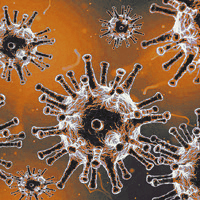COVID-19: measures to protect older adults from SARS-CoV-2 infection

Accepted: 25 August 2020
HTML: 15
All claims expressed in this article are solely those of the authors and do not necessarily represent those of their affiliated organizations, or those of the publisher, the editors and the reviewers. Any product that may be evaluated in this article or claim that may be made by its manufacturer is not guaranteed or endorsed by the publisher.
As every nation battles the coronavirus disease 2019 (COVID-19) pandemic comprehensively, older adults are by far the most affected group in terms of morbidity and mortality rates. Particularly individuals in the age range of >60 years and with comorbidities and other geriatric conditions are at heightened risk of complications from COVID-19 compared to any other age groups in the world. The time between the infection of severe acute respiratory syndrome-coronavirus 2 (SARS-CoV- 2) and the manifestation of the symptoms is between two to twelve days. Typical symptoms of COVID-19 are high temperature, dry cough, and breathing difficulties in complicated cases, while new evidence shows atypical presentations of COVID-19 symptoms in older adults, and are highlighted in this review. From this synopsis, we deduced that firstly, the severity of COVID-19 among older adults is because of biological (dwindling immunity with old age), socio-economic (poverty and over-stretched health system) and physical reasons (frailty and comorbidities). Secondly, there is an upsurge in the rates of transmission and COVID-19 fatalities in nursing homes globally. Lastly, to abate the spread of SARS-CoV-2 among older adults, strict adherence to physical distancing, frequent hand hygiene and respiratory hygiene, frequent disinfection of surfaces, stoppage to unnecessary travel and nonessential hospital’s visitations, appropriate use of face masks, healthy life style choices, proper identification and isolation of infected older adults, assistance and support for older adults in the community, and prevention of infections in nursing homes should all essentially be implemented globally. It is recommended that maximum compliance to measures provided in this review should be ensured and implemented. Governments, civil societies and general public should provide supports for older adults during this COVID-19 pandemic period, and new researches should look more into the global severity of COVID-19 on nursing homes and the geriatric populations generally to get progressively feasible exact information that will enable informed preventive choices.
Copyright (c) 2020 the Author(s)

This work is licensed under a Creative Commons Attribution-NonCommercial 4.0 International License.
PAGEPress has chosen to apply the Creative Commons Attribution NonCommercial 4.0 International License (CC BY-NC 4.0) to all manuscripts to be published.


 https://doi.org/10.4081/gc.2020.9045
https://doi.org/10.4081/gc.2020.9045



